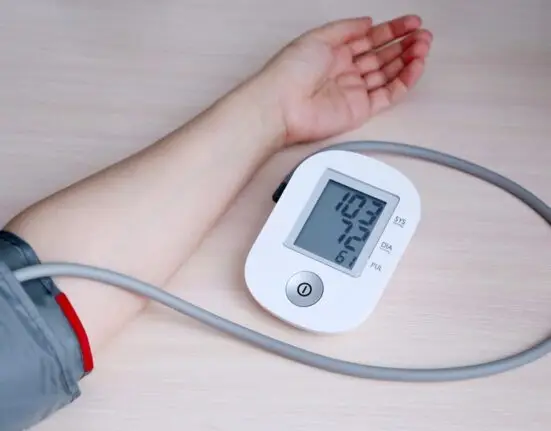Introduction
Spotting is a term used to describe light vaginal bleeding that occurs between menstrual periods. It typically involves a small amount of blood, noticeable on underwear or toilet paper, and usually requires minimal protection, such as a panty liner. While spotting is often a benign occurrence, it can be caused by various factors ranging from hormonal changes to pregnancy or even more serious conditions. Understanding the potential causes of spotting can help in determining whether it’s a normal variation in your menstrual cycle or a sign of a more significant health issue.
1.What is spotting?
Spotting is spotting or light vaginal bleeding that occurs before your regular period. Spotting usually involves a small amount of blood. You can see it on your underwear or toilet paper. If you need protection, it’s usually just a panty without pads. Spotting can have many causes. It can sometimes be a sign of a more serious problem, but not often. Make an appointment with the doctor to find out.
2.What causes spotting before periods?
There are several reasons why you may experience spotting before your period.
2.1 pregnancy
Spotting is common during pregnancy. About 10 to 20 percent of pregnant women will experience spotting during their first month. Bleeding is often light and can be colored like.
2.2 Pink red brown
Spotting is usually not a cause for concern, but you should tell your doctor if you have it. Contact a doctor immediately if you experience heavy bleeding or pelvic pain, as these may be signs of a miscarriage or ectopic pregnancy.
2.3 Birth control
Spotting before periods can also be caused by hormonal birth control. Birth control is sometimes used to treat abnormal bleeding. Talk to your doctor if your symptoms don’t improve or get worse. They may recommend a different birth control method.
2.4 Ovaries
According to an older 2012 study of women with periods, about 4.8 percent have experienced ovulation-related spotting. Light bleeding from the ovaries that occurs during your menstrual cycle when the ovary releases an egg. This is usually 14 days before menstruation. Ovulation spotting may be light pink or red and last for 1 to 2 days in the middle of the cycle.
2.5 Premenopause
As you move into menopause, there may be months when you don’t ovulate, a time called premenopause. During premenopause, periods become more irregular, and you may experience spotting.
2.6 Implantation bleeding
Implantation spotting can occur when a fertilized egg attaches to the inner uterine lining. About 10 to 20 percent of pregnant women experience bleeding in early pregnancy. If implantation spotting occurs, it will often be a few days before your next period starts. Implantation bleeding is usually light pink to dark brown. Her flow may be shorter and lighter than a normal period. Instead of aggravating any kind of disease, consult the concerned doctor for ointment.
2.7 Uterine or cervical polyps
Polyps are small tissue growths that can occur in many places, including the cervix and uterus. You can usually see uterine polyps on imaging tests such as ultrasound. They are often benign, but only a small proportion become cancerous. Some people may experience only spotting from polyps, and others may experience no symptoms.
2.8 Stress
Stress can cause all kinds of changes in your body, including fluctuations in your menstrual cycle. Some women may experience spotting before periods due to physical or emotional stress.
2.9 Use of medicines
Some medications can cause premenstrual bleeding. They include
Blood thinners.
Thyroid medications.
Hormonal drugs.
If you experience unusual bleeding, a doctor may stop you from these medications or prescribe an alternative.
2.10 Thyroid problems
Thyroid or hypothyroidism can cause spotting after your period ends. Having hypothyroidism means that your thyroid does not produce enough of the thyroid hormones that control many body processes, including menstruation. These processes can be slow.
3.Is it spotting or do you have period?
Spotting is different from bleeding from your period.
- Usually, spotting occurs.
- It is light in flow.
- Pink, reddish or brown.
- It does not last more than 1 or 2 days.
- Bleeding due to your periods.
- A pad or tampon is usually enough.
- It lasts for 4 to 7 days.
- About 30 to 72 milliliters (mL) of total blood is lost.
- And it is every 21 to 35 days.
- A variety of factors can cause spotting before your period. Some require immediate medical treatment while others are harmless. It’s normal, any vaginal bleeding that occurs before your period could be a sign of pregnancy or a medical condition. You should see a doctor if you have spotting, especially if you’ve already gone through menopause.
Conclusion
Spotting before your period can be influenced by multiple factors, including hormonal fluctuations, pregnancy, stress, and certain medications. While it is often harmless, understanding the underlying causes is essential to ensure it does not indicate a more serious problem. If you experience spotting, especially if accompanied by other symptoms like heavy bleeding or pelvic pain, it is crucial to consult a healthcare professional for a thorough evaluation. By recognizing the signs and seeking appropriate medical advice, you can manage your reproductive health more effectively.





Leave feedback about this